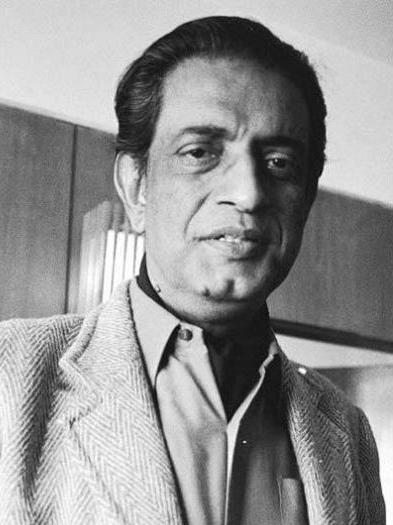
Introduction
Satyajit Ray, a luminary in the world of cinema, is celebrated for his profound impact on Indian and global filmmaking. As a director, writer, and composer, Ray’s contributions extend beyond the screen, influencing generations of artists and storytellers. This article delves into Ray’s life, his cinematic journey, and the invaluable lessons we can glean from his artistic vision. By exploring his story, we aim to understand the essence of creativity, perseverance, and innovation in the arts.
Early Life and Struggles
Satyajit Ray was born on May 2, 1921, in Calcutta (now Kolkata), India, into a family with a rich cultural and literary heritage. His grandfather, Upendrakishore Ray Chowdhury, was a renowned writer and illustrator, while his father, Sukumar Ray, was a celebrated poet and author of children’s literature. Despite this illustrious lineage, Ray faced numerous challenges in his early life.
After completing his schooling at Ballygunge Government High School, Ray pursued a degree in economics at Presidency College, Calcutta. However, his true passion lay in the arts. He later enrolled at the Visva-Bharati University in Santiniketan, founded by Rabindranath Tagore, where he studied fine arts. This period profoundly influenced his artistic sensibilities, exposing him to diverse forms of art and culture.
Ray’s entry into the film industry was marked by financial constraints and skepticism from established filmmakers. He started his career as a commercial artist but harbored a deep desire to make films. His determination and love for cinema eventually led him to direct his first film, “Pather Panchali,” despite the many obstacles he faced.
Career Highlights and Achievements
Satyajit Ray’s career is a testament to his unwavering dedication to his craft. His debut film, “Pather Panchali” (1955), marked the beginning of the Apu Trilogy, which includes “Aparajito” (1956) and “Apur Sansar” (1959). These films, based on the works of Bibhutibhushan Bandopadhyay, depict the life of Apu, a young boy from a rural Bengali family, and are celebrated for their realism, emotional depth, and visual poetry.
“Pather Panchali” received critical acclaim and numerous awards, including the Best Human Document at the Cannes Film Festival. This success established Ray as a significant voice in world cinema. His subsequent films, such as “Charulata” (1964), “Aranyer Din Ratri” (1970), and “Shatranj Ke Khilari” (1977), further cemented his reputation as a master storyteller.
Ray’s films are characterized by their nuanced portrayal of human relationships, social issues, and the intricacies of Indian life. He was a pioneer in introducing Indian cinema to international audiences, earning accolades such as the Golden Lion at the Venice Film Festival and an Honorary Oscar for Lifetime Achievement in 1992.
In addition to filmmaking, Ray was an accomplished writer, illustrator, and composer. He penned numerous short stories, novels, and screenplays, often accompanied by his illustrations. His works, such as the “Feluda” detective series and “Professor Shonku” science fiction stories, continue to captivate readers of all ages.
Life Lessons and Inspirational Quotes
Satyajit Ray’s life and career offer a wealth of lessons in creativity, perseverance, and the pursuit of excellence. Here are some key takeaways:
- Pursuing Passion with Persistence: Ray’s journey from a commercial artist to an internationally acclaimed filmmaker underscores the importance of following one’s passion with unwavering determination. His decision to make “Pather Panchali” despite financial hardships and initial skepticism exemplifies his commitment to his artistic vision.
- Innovation and Adaptability: Ray was a pioneer in many aspects of filmmaking, from his use of natural light and on-location shooting to his incorporation of Indian classical music in his scores. His ability to innovate and adapt to the changing dynamics of cinema is a lesson in staying relevant and pushing creative boundaries.
- Attention to Detail: Ray’s meticulous approach to filmmaking, from scriptwriting to set design, highlights the importance of attention to detail. His films are known for their authenticity and rich visual storytelling, which stem from his thorough research and dedication to accuracy.
- Universal Themes: Ray’s exploration of universal themes such as love, loss, and human resilience has resonated with audiences worldwide. His ability to depict the human condition with empathy and insight is a testament to the power of storytelling in bridging cultural and linguistic divides.
- Humility and Lifelong Learning: Despite his numerous accolades, Ray remained humble and committed to lifelong learning. He continuously sought to improve his craft, drawing inspiration from various sources, including literature, music, and visual arts.
Inspirational Quotes by Satyajit Ray:
- “The director is the only person who knows what the film is about.”
- “I believe that if a work of art is true, it will have a meaning for people at all times.”
- “A story should have a beginning, a middle, and an end, but not necessarily in that order.”
Additional Insights into Satyajit Ray’s Life
Satyajit Ray’s personal attributes and interests significantly influenced his artistic journey. His deep appreciation for literature, music, and visual arts is evident in his films and writings. Ray was a voracious reader and drew inspiration from a wide range of authors, including Rabindranath Tagore, Anton Chekhov, and Agatha Christie.
Ray’s interest in music led him to compose scores for many of his films. His collaboration with renowned musicians like Ravi Shankar enriched the auditory experience of his cinema. Ray’s understanding of music’s emotional impact on storytelling is a lesson in the importance of sound in visual media.
His contributions to children’s literature, particularly the “Feluda” and “Professor Shonku” series, showcase his versatility as a writer. These stories, filled with adventure, mystery, and scientific curiosity, continue to inspire young readers.
Ray’s ability to balance various roles—filmmaker, writer, illustrator, and composer—demonstrates his multifaceted talent and relentless pursuit of creative expression. His legacy is a testament to the power of storytelling in its many forms.
Conclusion
Satyajit Ray’s life and career are a beacon of inspiration for artists, storytellers, and creatives across the globe. His ability to blend realism with poetic storytelling, his commitment to authenticity, and his innovative approach to cinema have left an indelible mark on the world of filmmaking.
Ray’s journey reminds us of the importance of pursuing our passions with dedication and resilience. His story is a powerful example of how embracing one’s unique vision and pushing creative boundaries can lead to extraordinary achievements.
As we reflect on Satyajit Ray’s legacy, we are encouraged to embrace our creative instincts, strive for excellence, and remain open to learning and growth. His life teaches us that true artistic vision transcends time and continues to inspire future generations.


